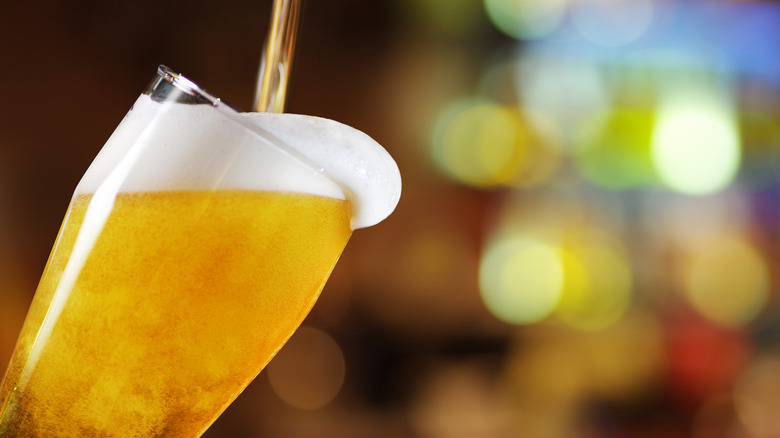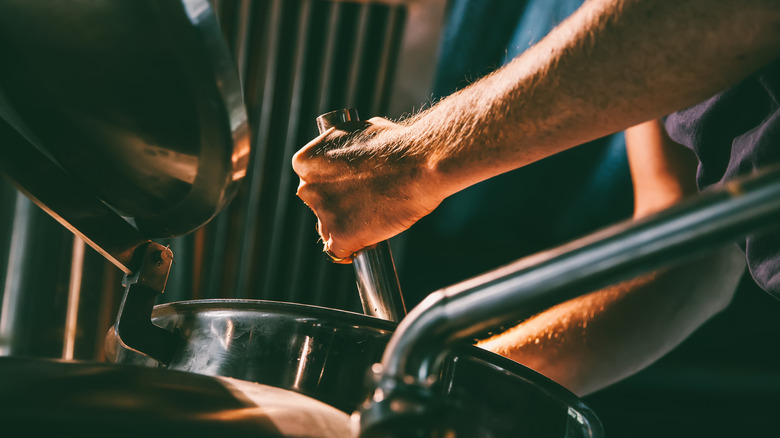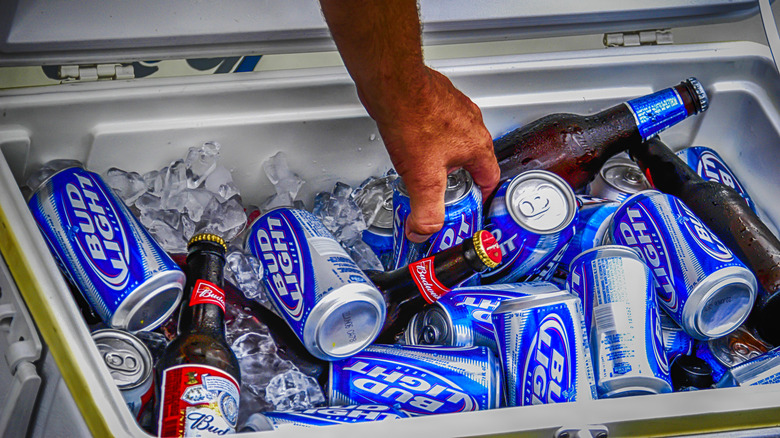Here's The Difference Between 'Light' And Regular Beer
If you want to become a student of history, you're going to come face to face with plenty of food and drink, and your studies will include a significant number of alcoholic beverages. However, while you'll learn about fascinating concoctions like tej, the Ethiopian honey wine with ancient origins, it will take quite a while until you get to the beloved brewed backbone of the average American watering hole: Light beer.
The history of beer goes back thousands of years, but light beer, which has become a standard fixture of bars, restaurants, liquor stores, and corner stores, is a much more recent invention. Many people in the alcohol industry feel that the modern culture of macro brews, which dissuades brewers from altering a recipe, and light brews, which are crafted with the explicit intention of cutting calories (minus a consideration for flavor), have made beer more boring over the past few decades. However, some brewers of light beer contend that its mass-marketing and mild flavor actually make consistent quality a greater challenge.
The loose definition of 'light'
When determining how light beer differentiates from its traditional relatives, you'll quickly find it to be an insufficient categorization. If a beer bears the label "light", you should still investigate further to find out exactly what earned the bubbly beverage the distinction. The phrase "light beer" has been used to describe beer with fewer calories or a lower alcohol percentage than standard varieties. It could also be simultaneously less caloric and less alcoholic.
The ins and outs of the light beer brewing process are fascinating. To wind up with light beer, the first step brewers must take is to change up the recipe. Decreasing sugar and with it, lowering the beer's ABV and calorie content is the name of the game. Rice, corn, or other fermentable bits of produce replace malt in the recipe. Light beer can be made by simply watering down a regular brew or by focusing on the enzymes — more mashing time allows more of the complex carbs in the beer to turn into simple sugars, or outside enzymes can be added to hasten this transformation. To that end, when making mash for your next batch of beer, raising the temperature of the kiln will suppress some sugar from fermenting, leading to a brew that is lighter in both calories and alcohol content.
Light beer over the years
According to a report from Straits Research, in 2022, the worldwide sales of light beer exceeded $300 billion, and this figure is expected to be around $380 billion by the end of the decade. This number is especially surprising when you factor in the relatively recent invention of light beer. The refreshing beverage has only been available for around 50 years, having been developed in the early 1970s. Back then, light beer was little more than regular beer that'd been mixed with water, but modern brewers have made great strides in the field.
Light beer's success may be linked to its brewing process, which is more strictly regulated than more unique, micro-brewed beers. These beloved bottles are made on a macro scale, meaning that they're much more consistent than the batches that come from craft breweries. Its ingredients are closely controlled, which helps ensure that every bottle winds up with the same perfectly sippable contents. However, before you try your hand at brewing light beer, you should know brewing this basic beer is actually a daunting task. A standard American lager, like Coors Light or Bud Light, has few bold flavors to obfuscate any errors made while brewing it, so making the perfect light beer requires thorough experimentation and strict adherence to a recipe.


